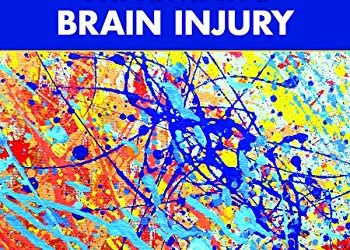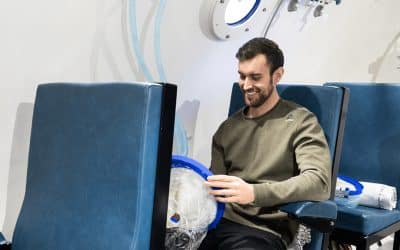HBOT Research
Hyperbaric Oxygen Therapy (HBOT) is increasingly appearing in new research as a treatment for a variety of conditions involving inflammation. Use the search or select an article below to to keep up to date on the most recent HBOT Research.
Recent Hyperbaric Oxygen Therapy (HBOT) Research
The clinical use of hyperbaric oxygen in the treatment of Danish patients with diabetic foot ulcers.
Patients with diabetic foot ulcers (DFU) suffer from diabetes-related complications and comor-bidities. Hyperbaric oxygen therapy (HBOT) is a treatment modality with limited capacity used in the treatment of DFUs. It is important to ensure that HBOT is offered to patients who are suitable for this treatment regarding effect, compliance and life expectancy. The objective of the present study was to describe the population of patients with DFU who were referred to HBOT in Denmark in the 1999-2016 period. All patients with DFU who were treated at the HBOT chamber in Copenhagen during the study period were considered. Patients with an invalid social security number or an incorrect diagnosis were excluded. Data on comor-bidities, amputation and death were extracted from the Danish National patient Registry and the Danish Civil Registration System.
Determination of netrin-1 levels and its relationship with neurotoxicity in carbon monoxide poisoning.
Abstract: The aim of the study was to assess netrin-1 levels in carbon monoxide (CO) poisoning to determine its relationship with poisoning severity and neurotoxicity. This is a cross-sectional prospective study. The patients older than 18 years...
Vitamin C for Type 2 Diabetes Mellitus and Hypertension
Abstract It is suggested that supplementation of vitamin C reduces hyperglycemia and lowers blood pressure in hypertensives by enhacing the formation of prostaglandin E1 (PGE1), PGI2 (prostacyclin), endothelial nitric oxide (eNO), and restore...
Textbook of Traumatic Brain Injury
Despite the increased public awareness of traumatic brain injury (TBI), the complexities of the neuropsychiatric, neuropsychological, neurological, and other physical consequences of TBI of all severities across the lifespan remain incompletely...
Determination of carboxyhemoglobin half-life in patients with carbon monoxide toxicity treated with high flow nasal cannula oxygen therapy.
Abstract: Acute carbon monoxide poisoning is a common environmental emergency worldwide. Treatment options are limited to normobaric oxygen therapy with a nonrebreather face mask or endotracheal tube and hyperbaric oxygen. The aim of this study is...
Hyperbaric oxygen therapy for the treatment of perianal fistulas in Crohn’s disease
Abstract: BACKGROUND: Perianal fistulizing Crohn's disease (pCD) has a significant impact on patients' health and quality of life. Current treatment options have a relatively low success rate and a high recurrence risk. Positive effects of...
Early diagnosis, prevention and treatment for calcific uremic arteriolopathy.
Abstract: Calcific uremic arteriopathy (CUA), termed calciphylaxis, is a rare but highly fatal clinical syndrome. There is no clearly laboratory diagnostic criteria for CUA. The medium and small arterial calcification and microthrombosis discovered...
Effects of far infrared therapy on neuropathy in type 2 diabetes mellitus: a randomized controlled trial
Diabetes is associated with many severe complications, such as heart disease and nerve damage. Diabetics have elevated blood glucose levels that result in peripheral neuropathy. As a result, diabetics always feel painful about their lower limbs and...
Rehabilitation for people with multiple sclerosis: an overview of Cochrane Reviews.
Multiple sclerosis (MS) is a major cause of chronic, neurological disability, with a significant long-term disability burden, often requiring comprehensive rehabilitation. To systematically evaluate evidence from published Cochrane Reviews of clinical trials to summarise the evidence regarding the effectiveness and safety of rehabilitation interventions for people with MS (pwMS), to improve patient outcomes, and to highlight current gaps in knowledge. We searched the Cochrane Database of Systematic Reviews up to December 2017, to identify Cochrane Reviews that assessed the effectiveness of organised rehabilitation interventions for pwMS. Two reviewers independently assessed the quality of included reviews, using the Revised Assessment of Multiple Systematic Reviews (R-AMSTAR) tool, and the quality of the evidence for reported outcomes, using the GRADE framework.








